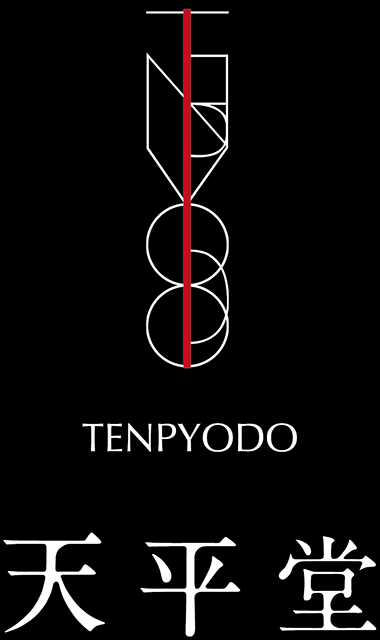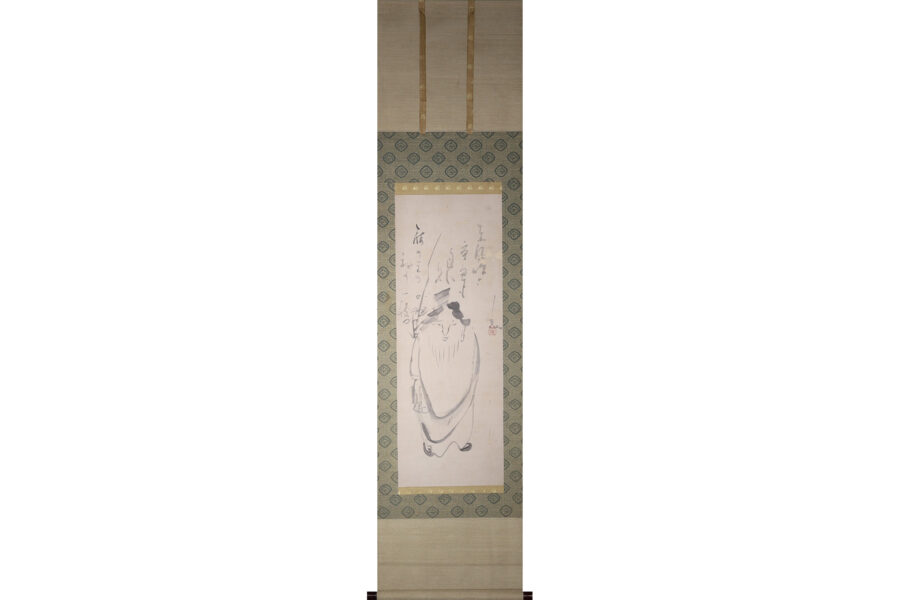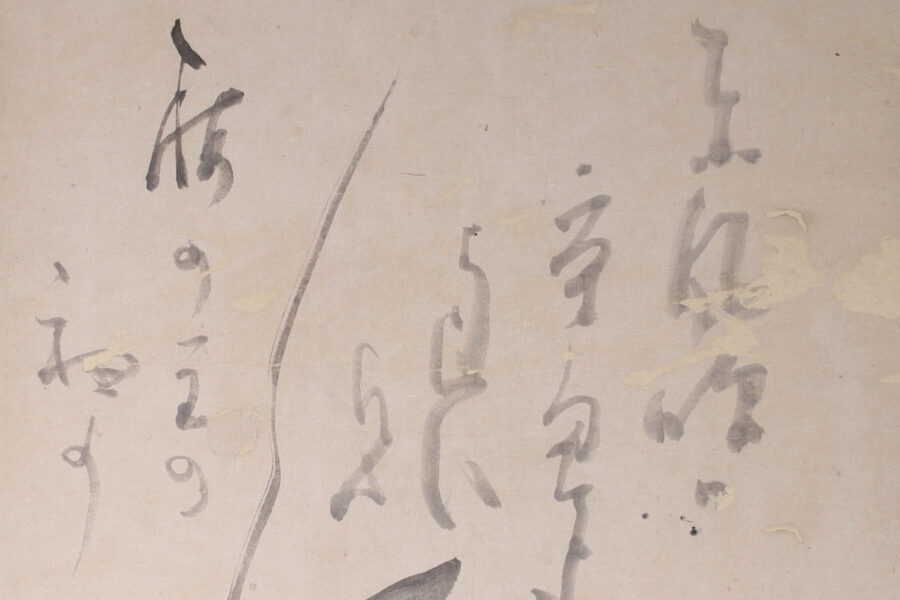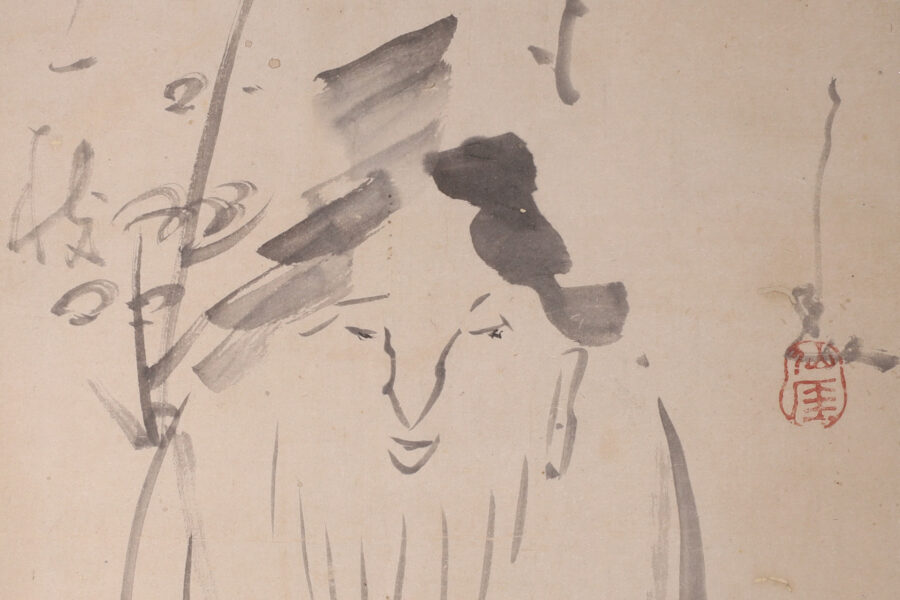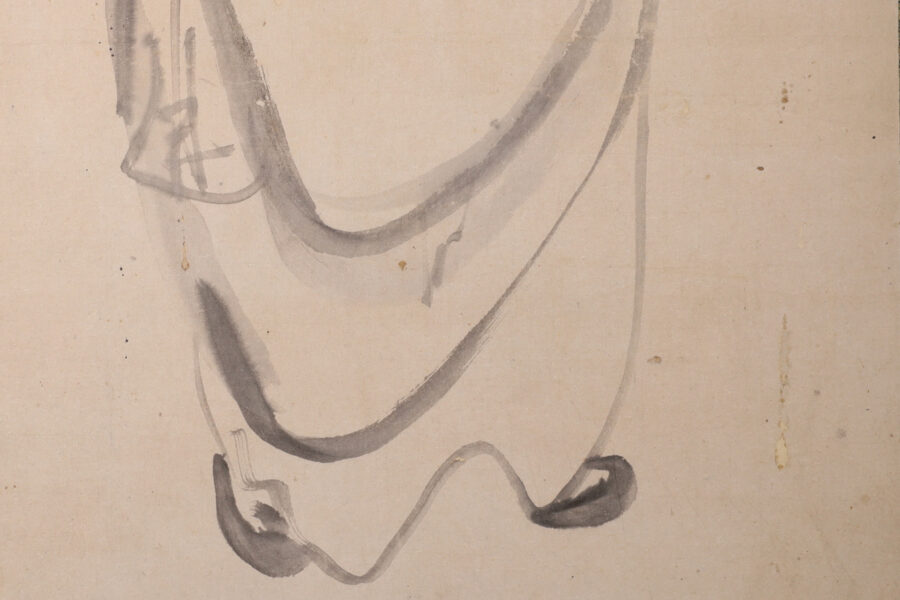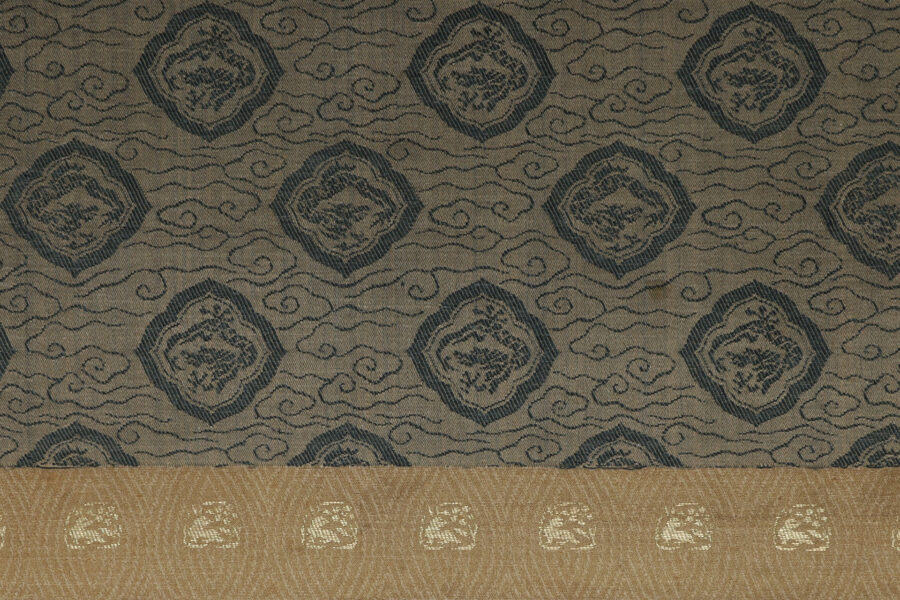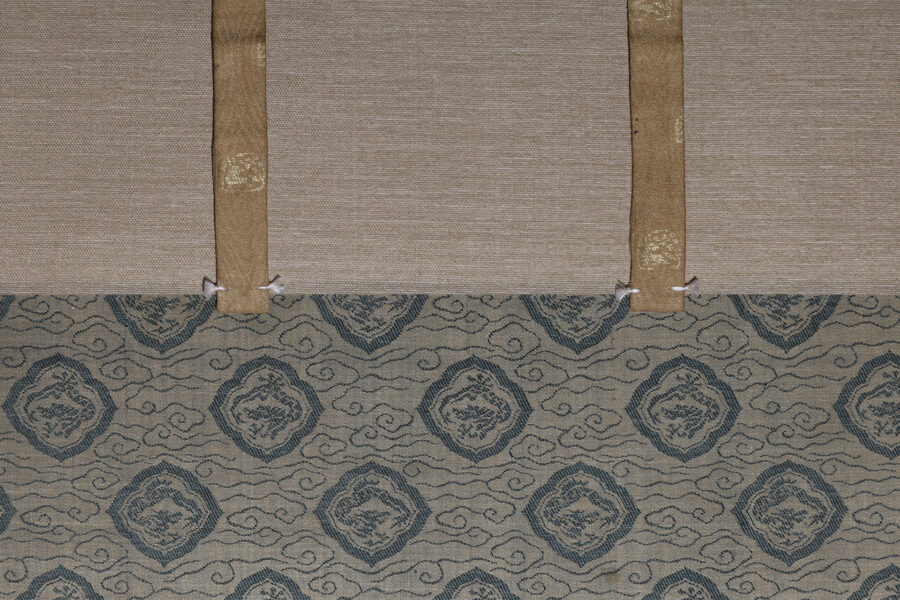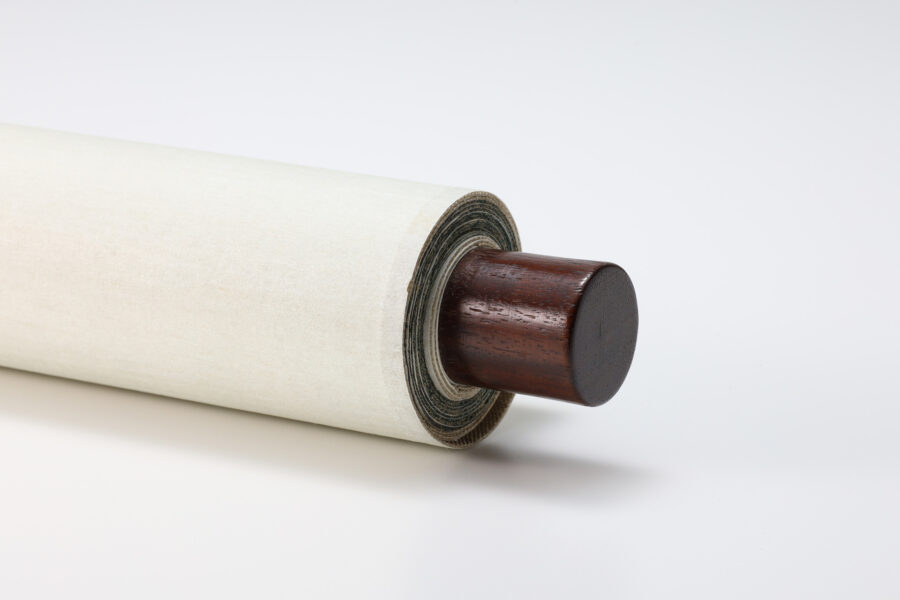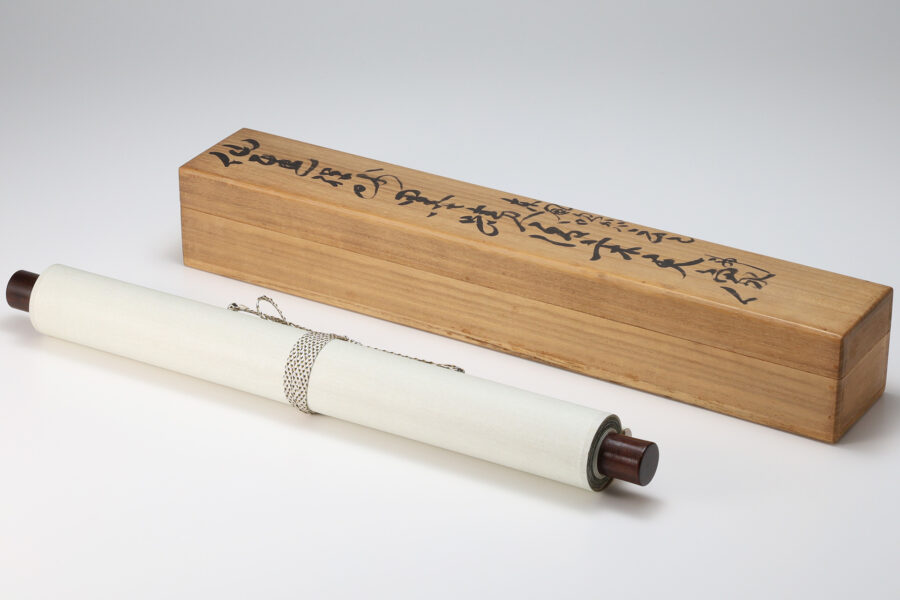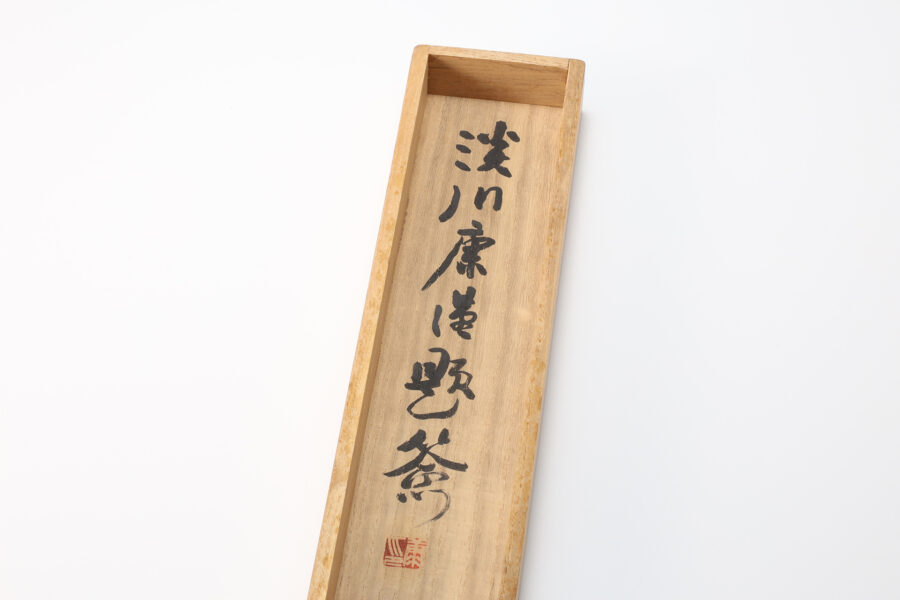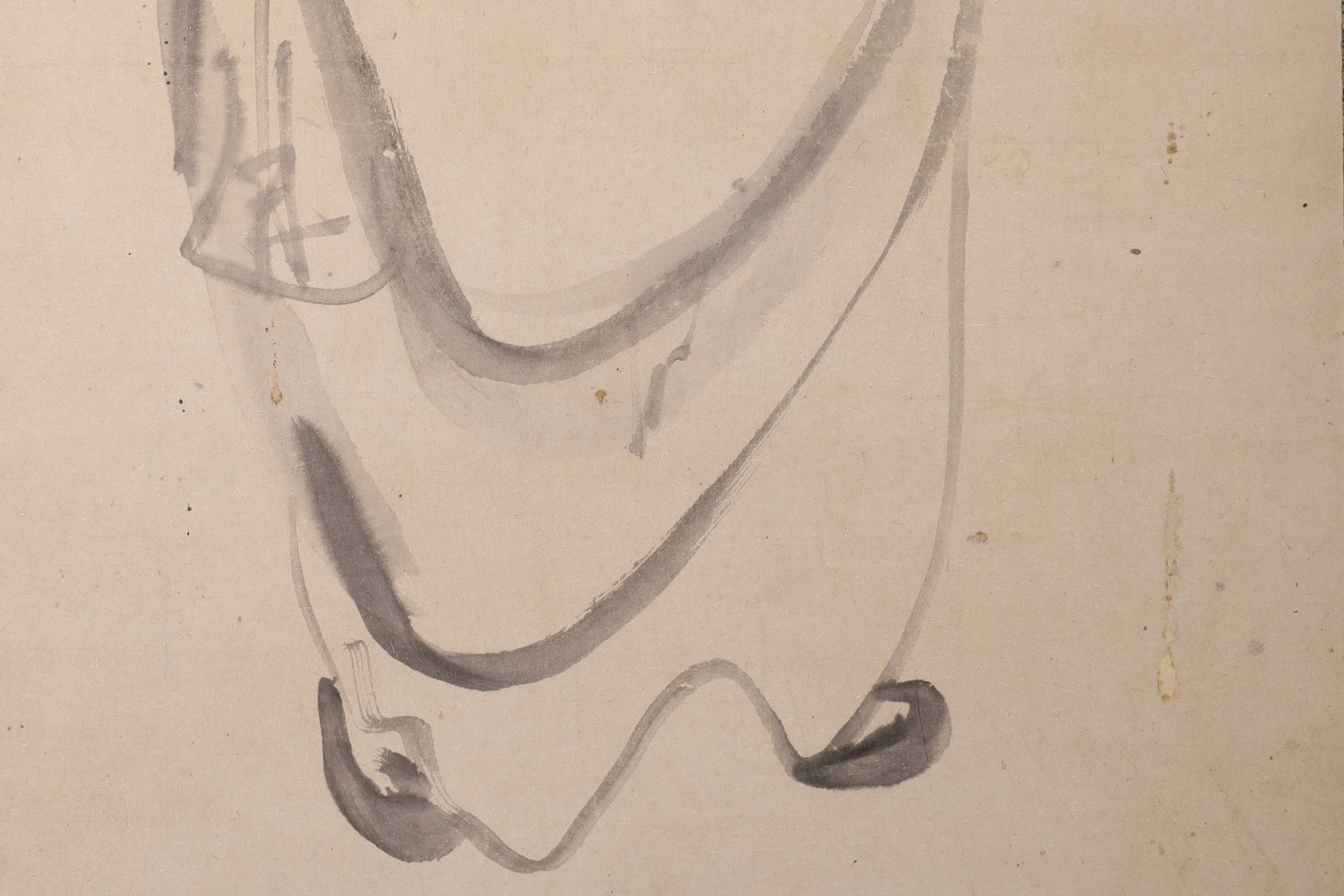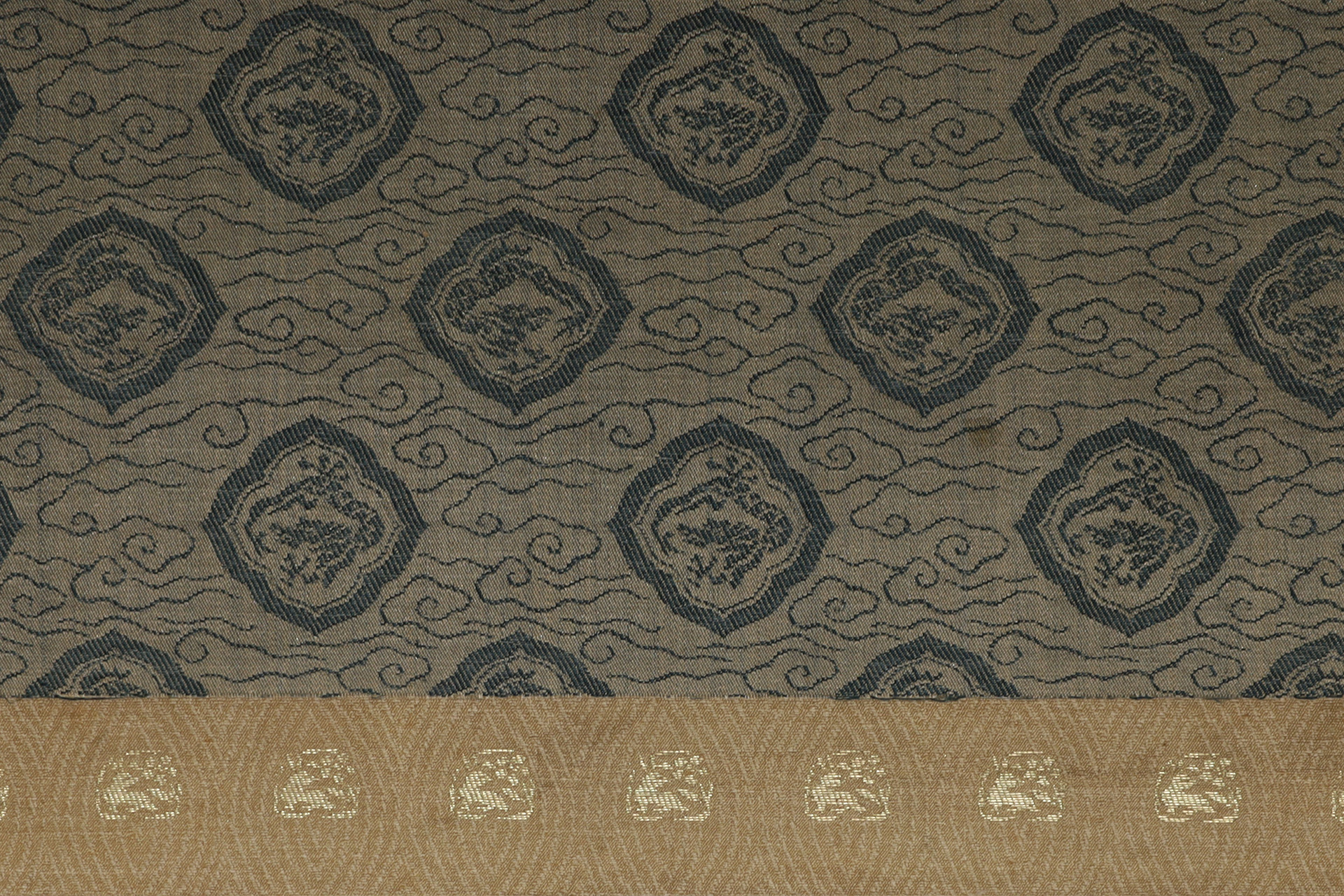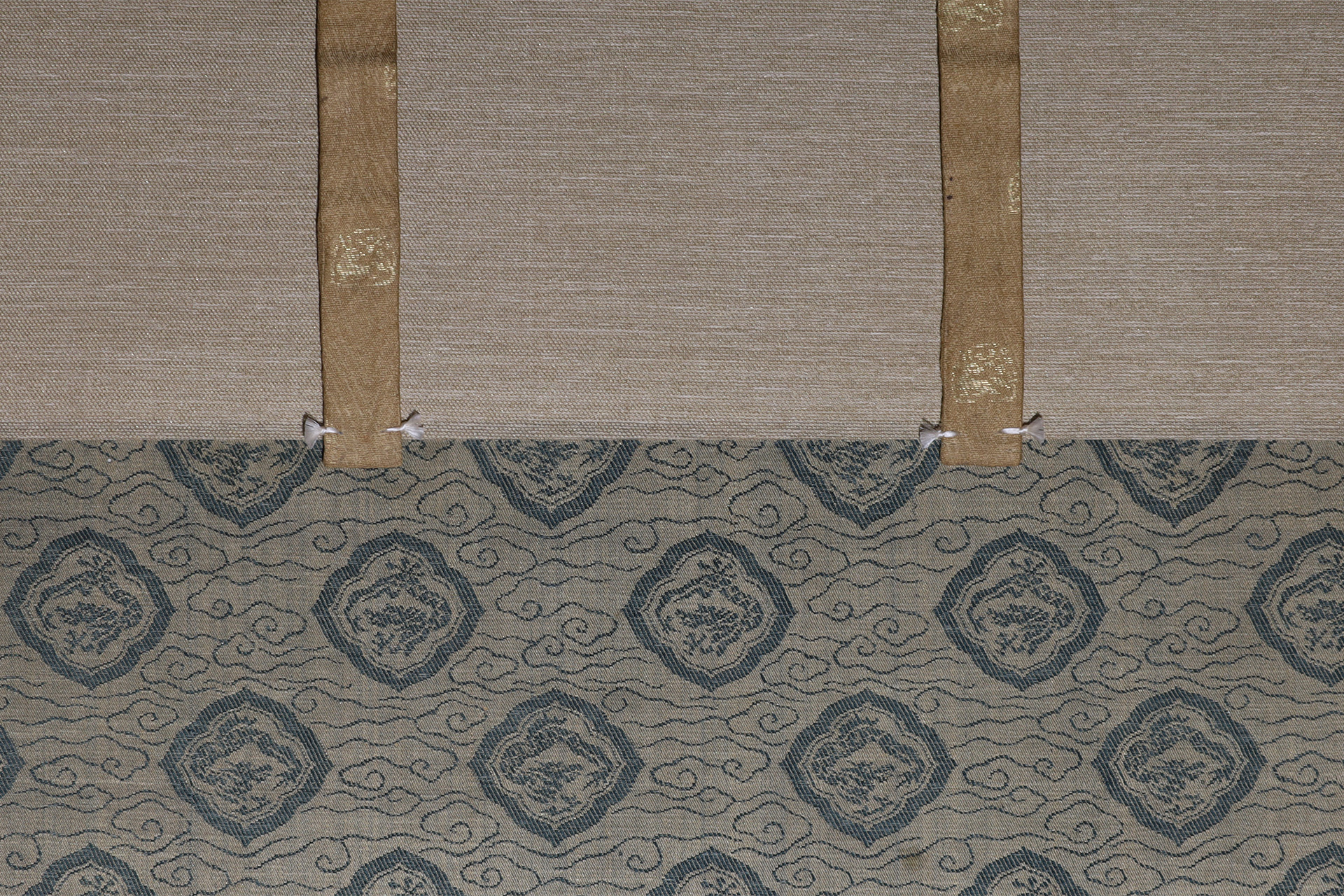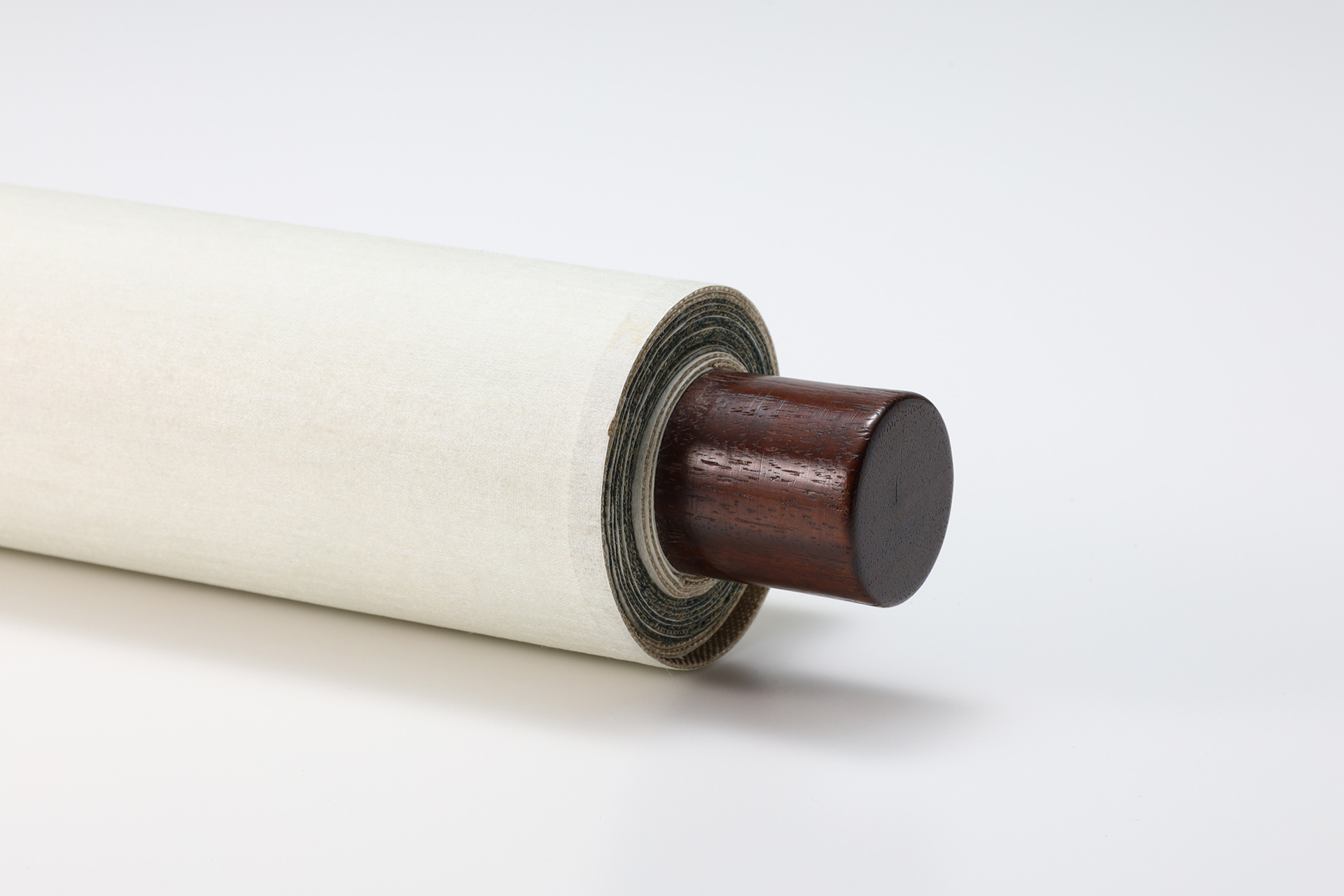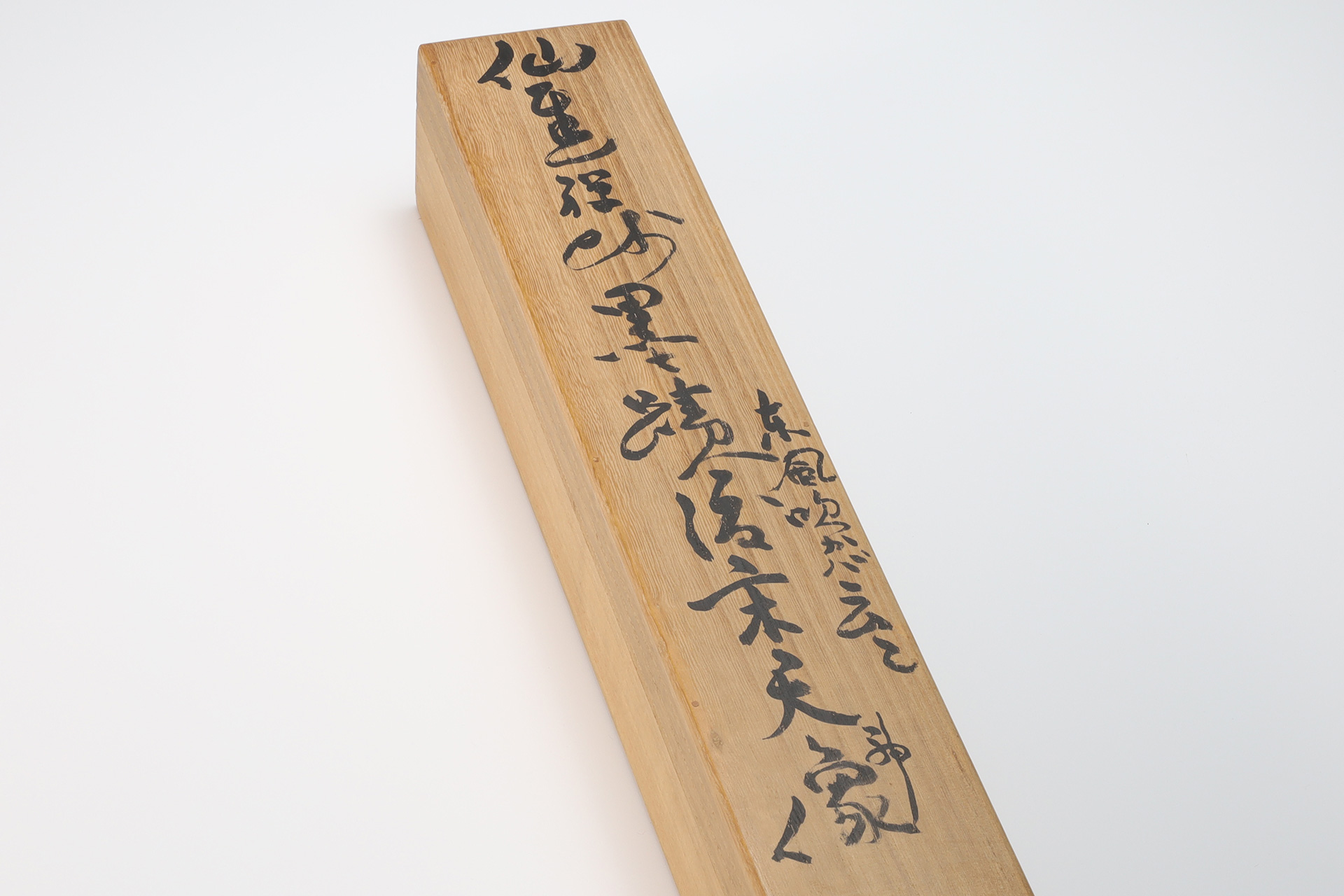Tenjin cross over to song is a tale created in japan during the muromachi period (1338-1573). The story goes that Sugawara no Michizane(845-903)studied zen under the chinese zen monk Wuzhun Shifan(1177-1249), received approval overnight, and returned to japan with a branch of plum tree.
Inquiry
- Product Code
- 240403-16
- Artist
- Sengai Gibon
1750-1837
- Paper Size
- (Vertical)78.5×(Width)28.5cm
- Hanging Scroll Size
- (Vertical)161.0×(Width)40.5cm
- Description
- Paulownia Box(Koichi Awakawa Appraisal)
- Condition
- There have been some repairs to the letters, but the binding is beautiful.
Sugawara no Michizane was a leading scholar of the heian period.
Today, he is worshipped devoutly as the god of learning, sincerity, and protection from misfortune.
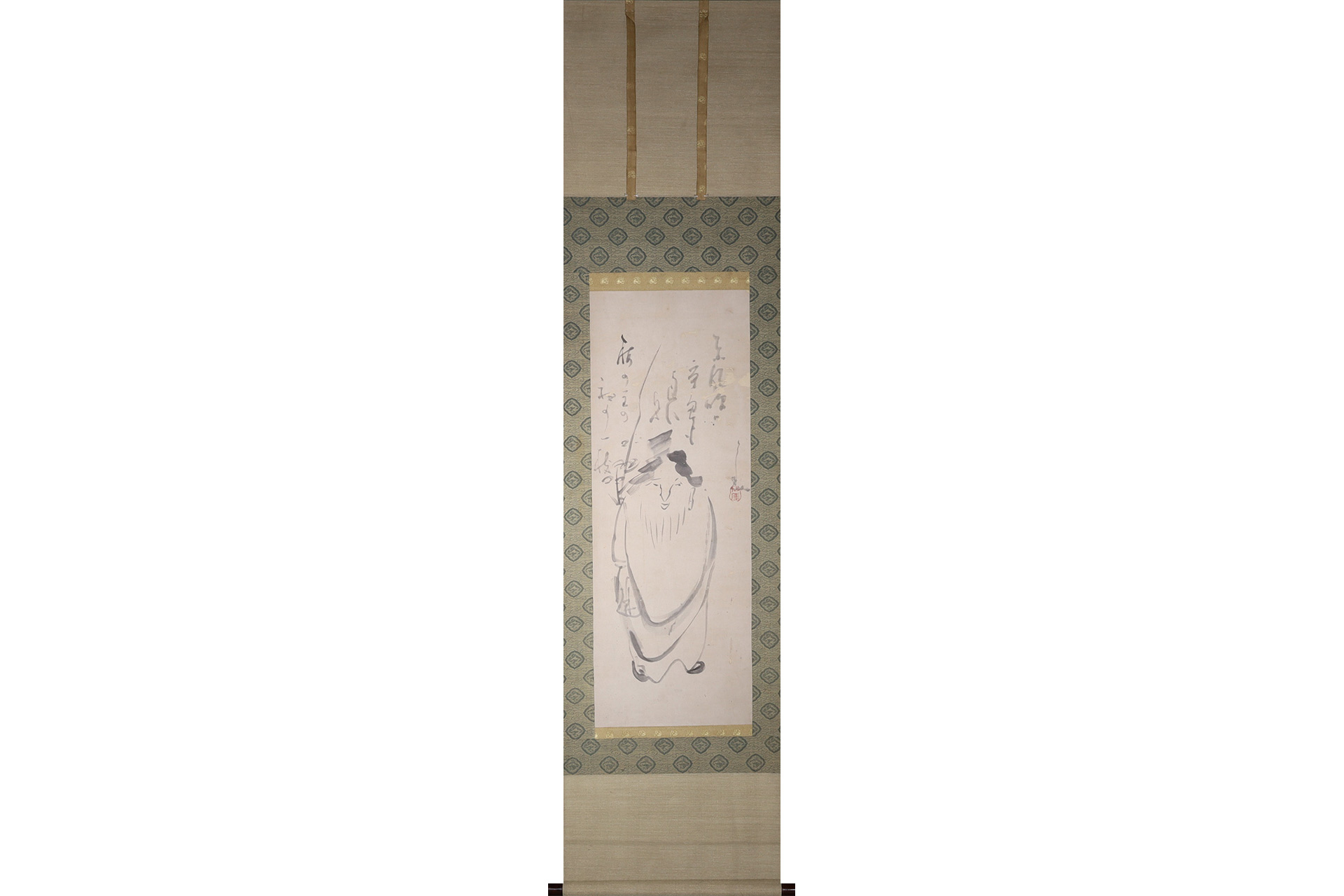
「Kochi-fukeha Morokoshi-matemo Nihohiken Ume-no-arujino Sode-no-hitoeda」
It comes from a legend that he studied zen under the chinese zen monk, Master Wuzhun Shifan.
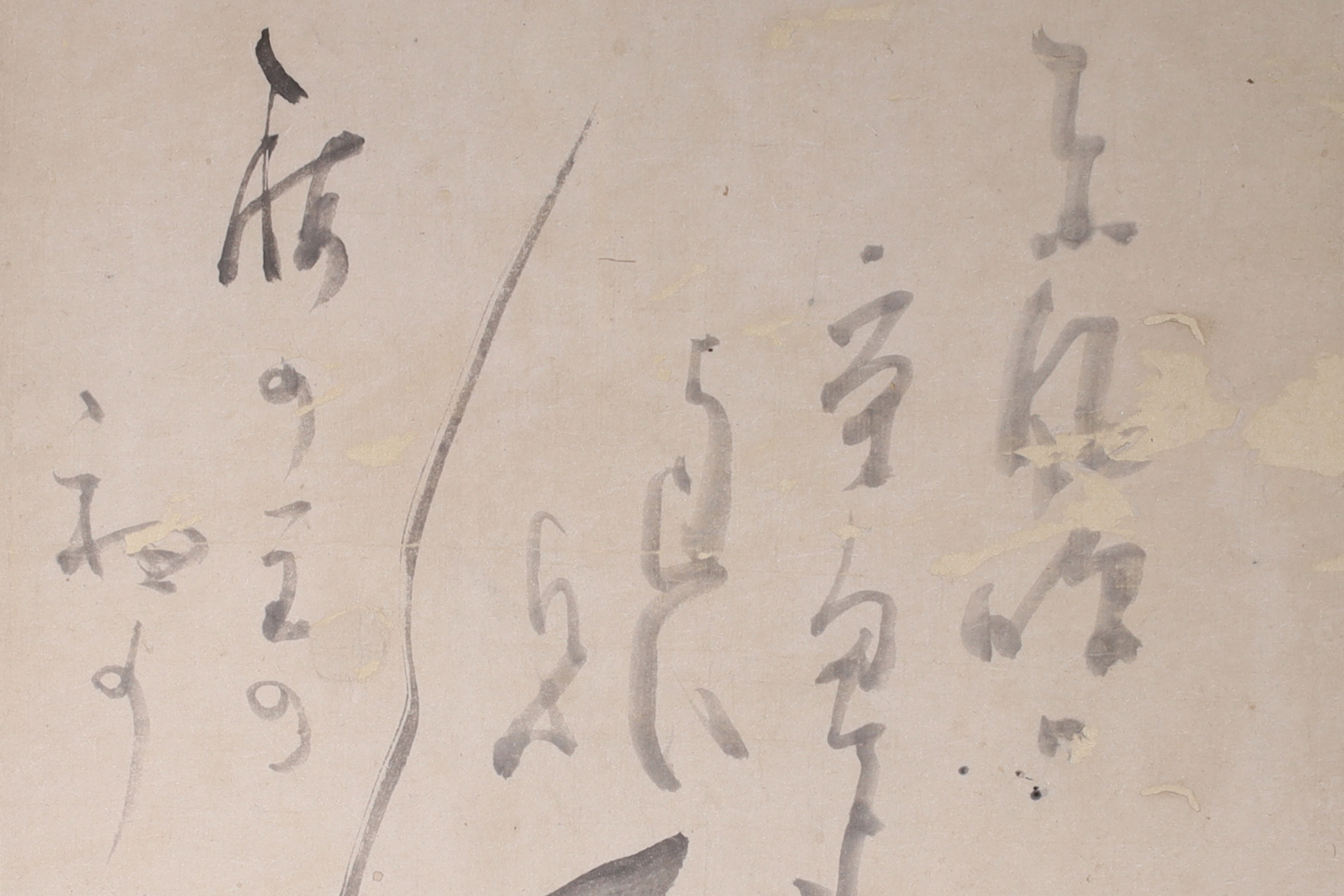
He is wearing the traditional zen robes, which are a symbol of zen practice, and is holding a branch of plum blossom.
It is said that its fragrance reached all the way to china.
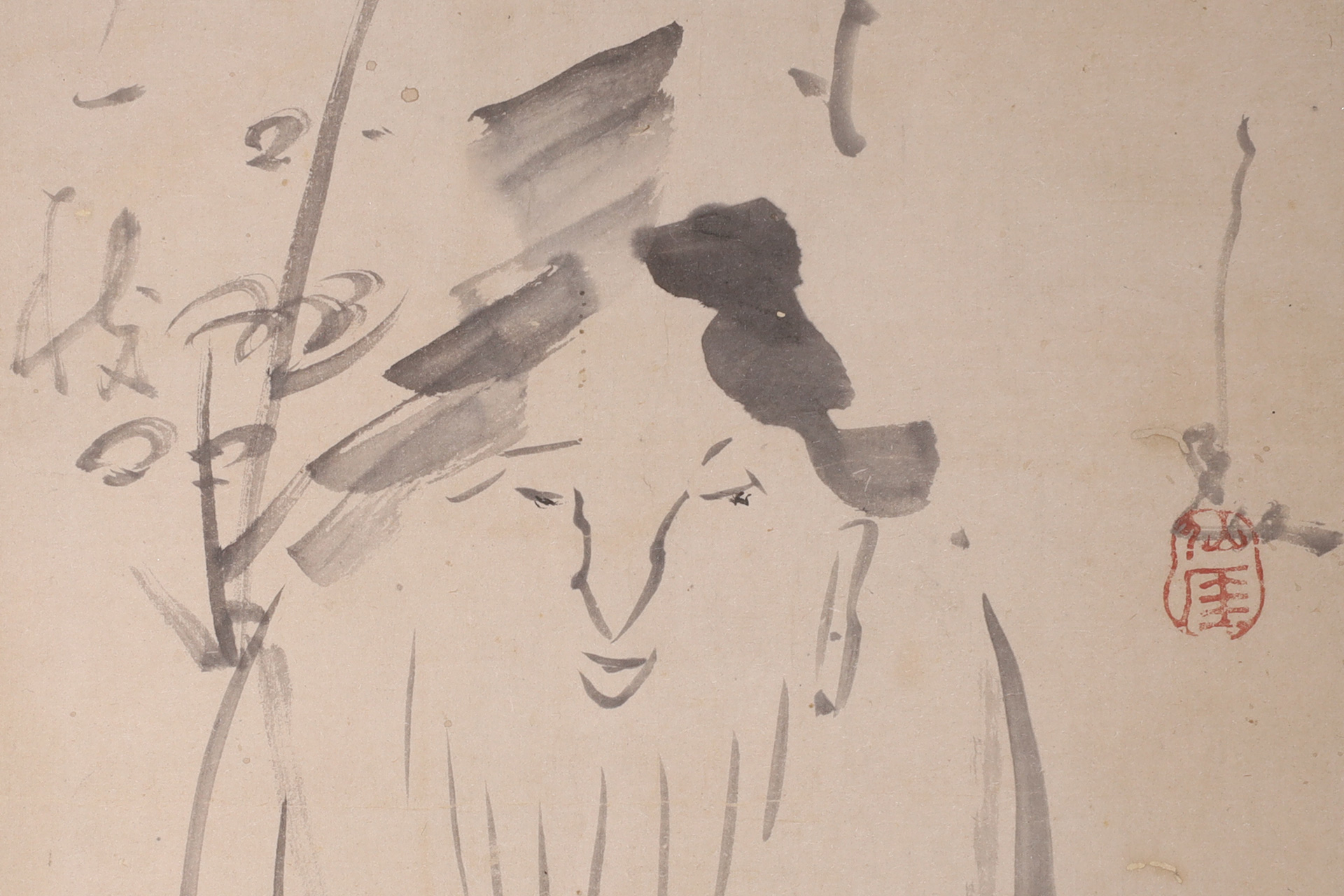
The appraiser, Koichi Awakawa, was known as a scholar of zen paintings, including those by Sengai, and left behind books such as “Sengai Calligraphy”.
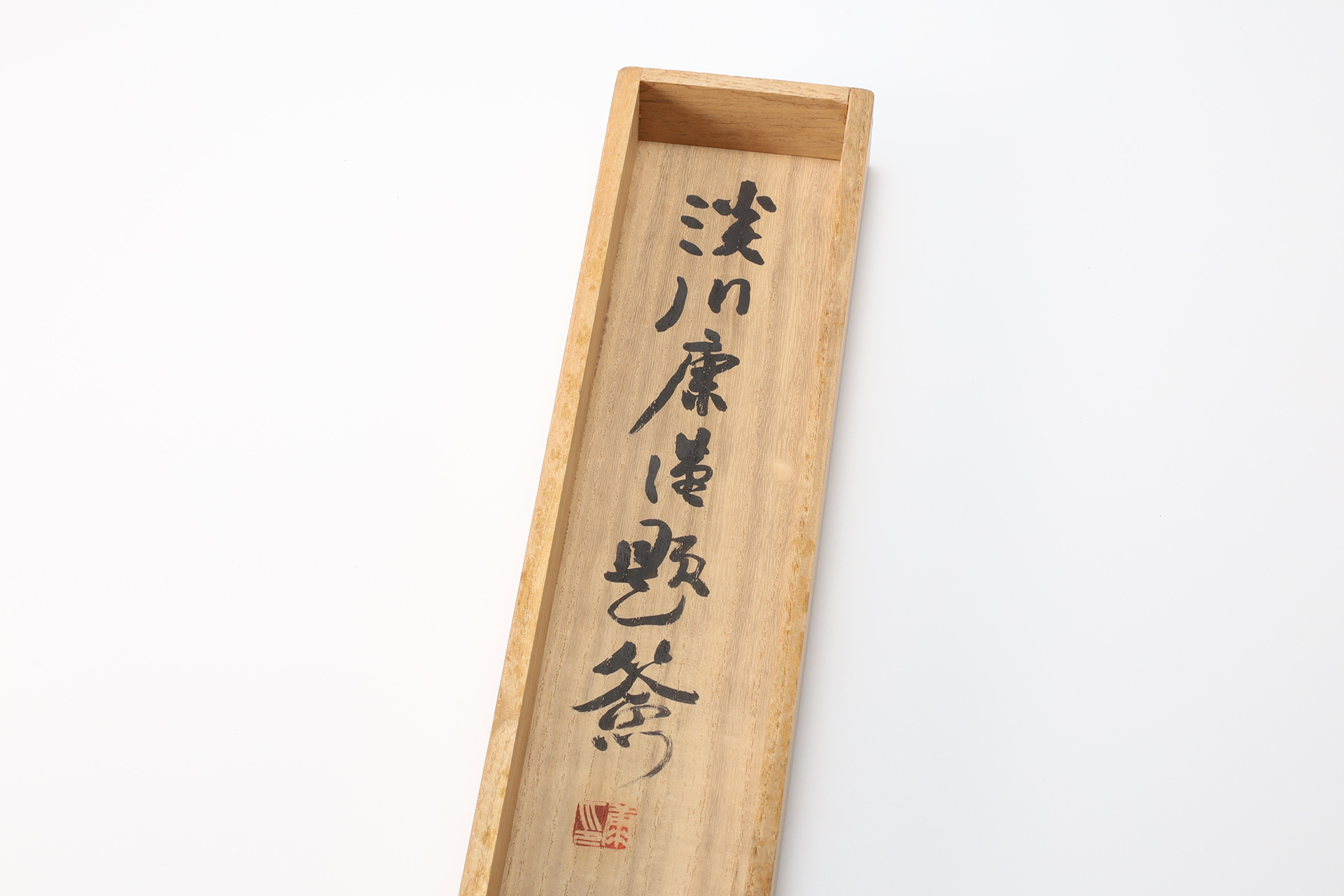
Sengai Gibon 1750-1837
Sengai Gibon was born in mino province(gifu prefecture).
Name is Gibon, alias Sengai.
In 1760, entered at seitai-ji temple. Sengai’s academic ambitions and interest in painting were nurtured in this environment, giving him the opportunity to enter toki-an.
In 1768, trained at toki-an in Yokohama.
In 1789, became the 123th chief priest of shofuku-ji temple.
In 1811, handed over the position of chief priest to his disciple Tangen Toi and retired. After turning 60, Sengai’s painting technique and sensibility became more refined, and a light hearted, humorous style began to emerge. He developed deep friendships with the people of hakata and left behind numerous calligraphy and paintings in response to their demand. The subject matter of his paintings also became richer, with the addition of everyday life of common people, landscapes, etc. Surrounded by loved ones and immersed in calligraphy and painting, Sengai’s work gained a growing reputation, but even he seemed troubled by the seemingly endless requests, and in 1832 he turned down all of them. However, requests for calligraphy continued unabated, and Sengai continued to write after that.
In his final years, he had no time to devote himself to painting and calligraphy, in 1836 his disciple Tangen, who had been entrusted with the major project of rebuilding shofuku-ji temple, incurred the wrath of the kuroda clan, and was ordered to resign from his position at shofuku-ji temple and exiled. Sengai was forced to reappoint himself as the chief priest of shofuku-ji temple, and became the 125th chief priest of shofuku-ji temple. He was elderly at the time, and the exile of Tangen, who he had looked forward to a promising future for, was a great sorrow for Sengai.
In 1837, passed away after submitting his petition for retirement.
He was affectionately known as “Sengai-san” by the local people, and he preached the way humans should behave while making people laugh by instilling deep lessons in his funny stories and light hearted drawings. He gave harsh warnings to arrogant samurai who used their power to their advantage, know it all scholars, and buddhist monks who did not serve others, and he was a virtuous man who was not afraid to do anything to fulfill his belief in right, yet was also kind and compassionate to people.
Koichi Awakawa 1902-1976
Koichi Awakawa was born in kyoto prefecture.
Studied at the Kyoto City First Commercial School, and entered Nagoya Commercial School in 1921, where studied economics under Kiyozo Miyata.
In 1924, entered the Faculty of Economics at the Kyoto Imperial University.
Drawn to statistics under Seiji Takarabe and then moved on to economic geography.
In 1927, graduated from the Faculty of Economics at the Kyoto Imperial University.
Previously served as professor at the Ritsumeikan University and Osaka Gakuin University.
